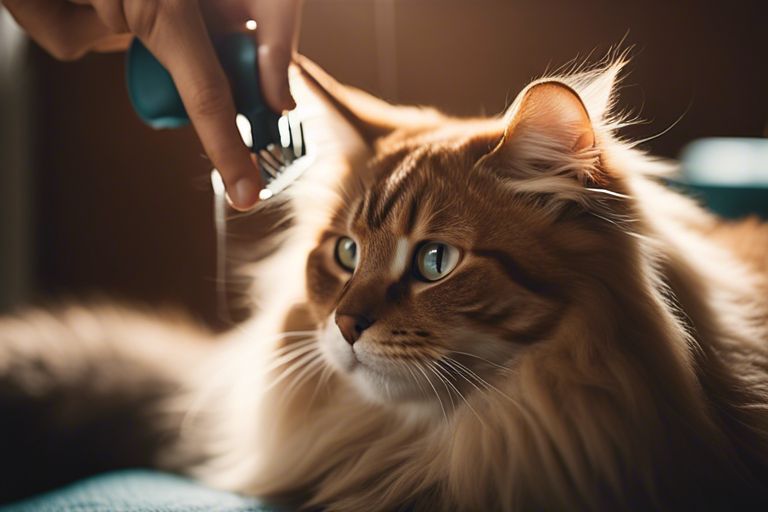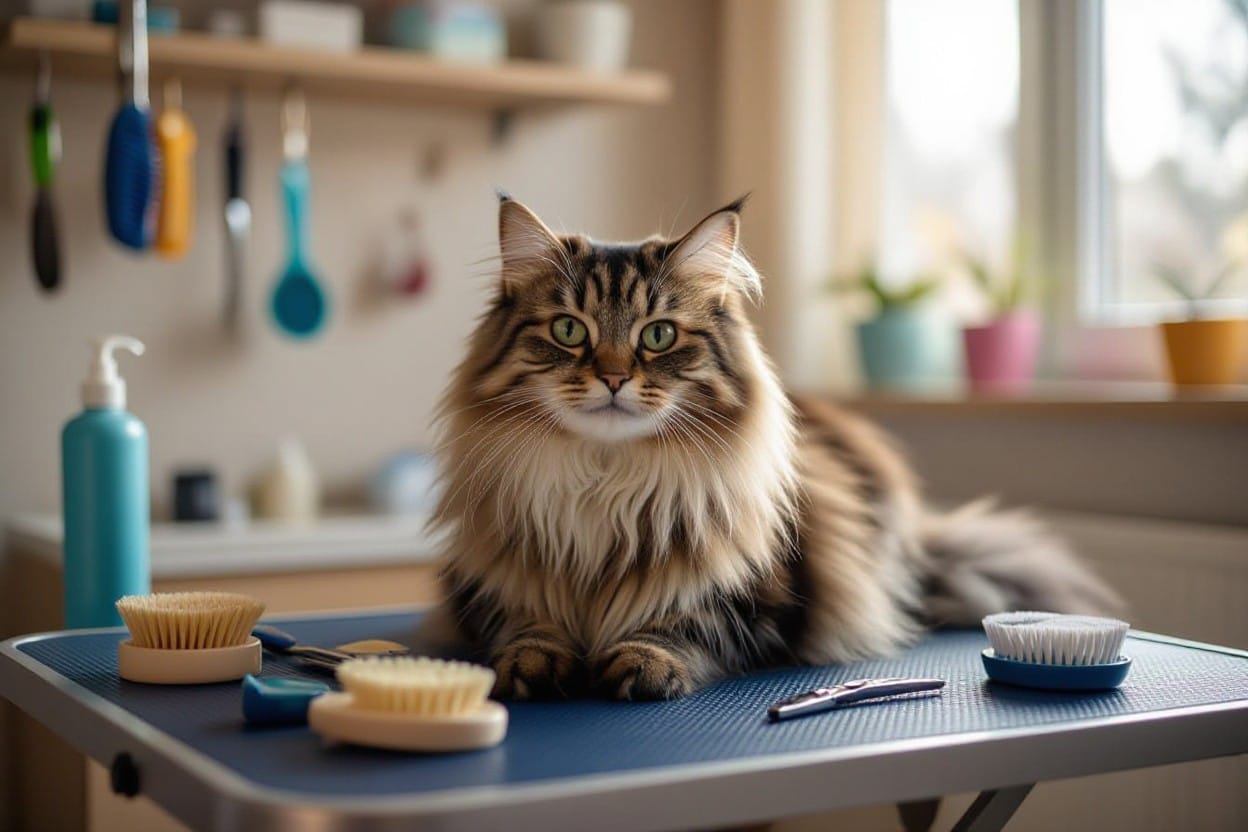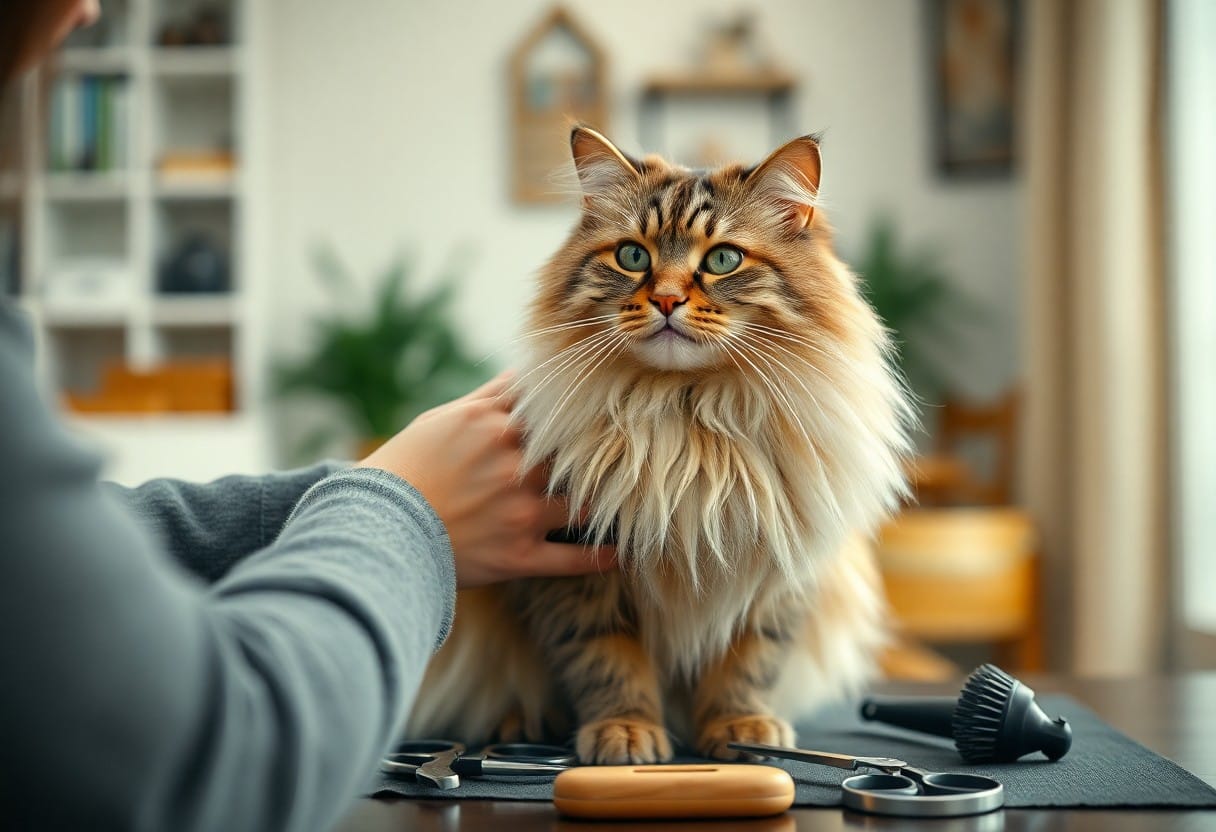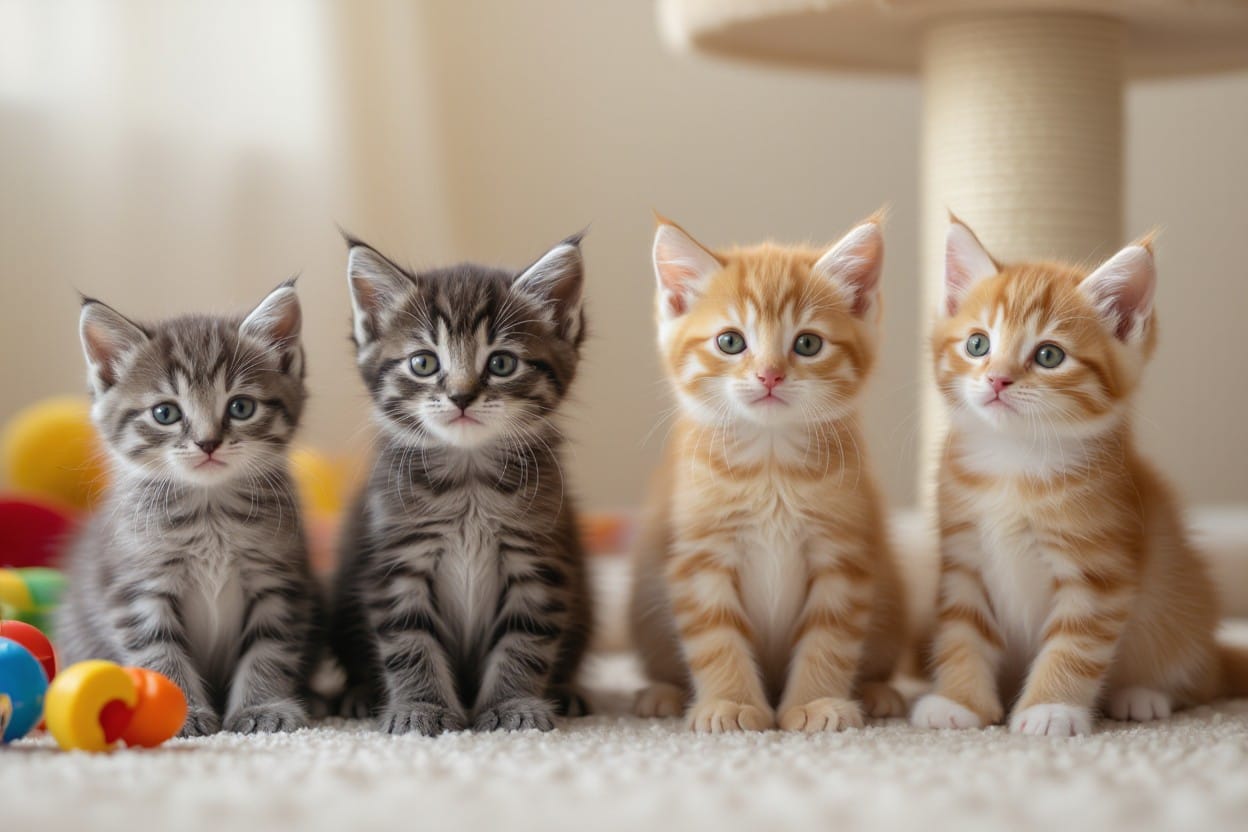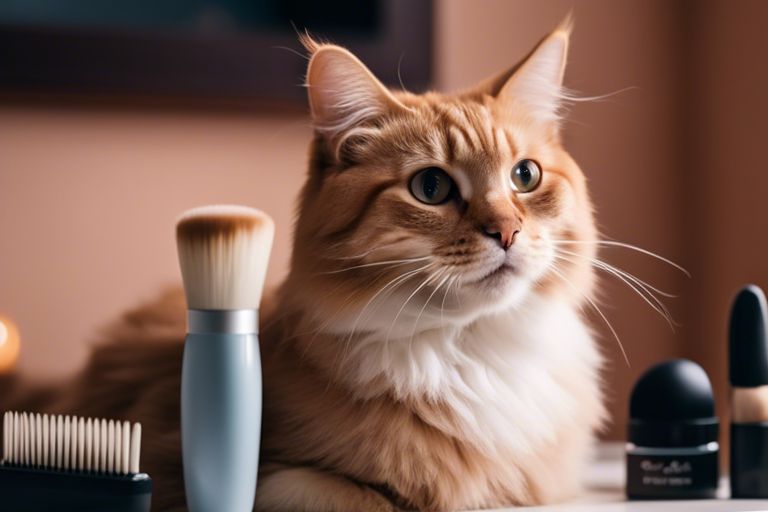Grooming long-haired cats can be a challenging task, but with the right techniques, you can keep their coats looking sleek and healthy. Regular brushing is important for preventing mats and tangles, which can be uncomfortable for your feline friend. It’s important to use the correct tools and methods to effectively groom your long-haired cat and maintain their coat in optimal condition.
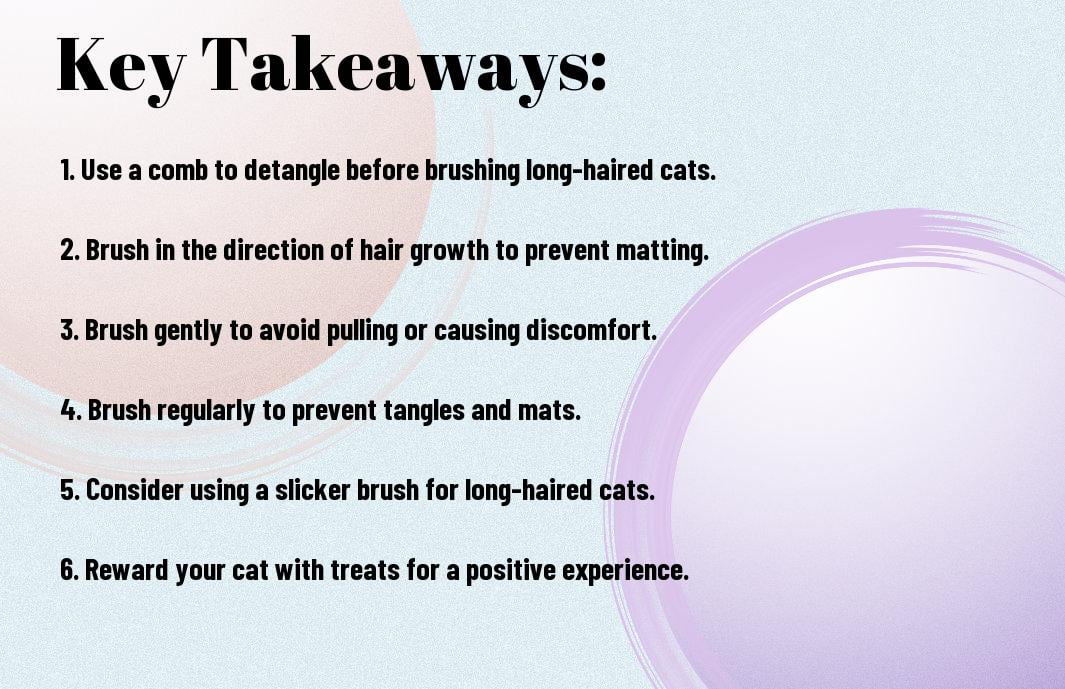
Understanding Your Long-Haired Cat’s Coat
There’s no denying that long-haired cats boast some of the most beautiful and luxurious coats in the feline world. However, caring for and maintaining their gorgeous fur can be a challenging task. To ensure that your long-haired cat’s coat stays healthy and tangle-free, it’s necessary to understand the different aspects of their fur.
Types of Cat Fur
- Long-haired cats can have various types of fur, ranging from silky and fine to thick and dense.
- Understanding your cat’s specific fur type will help you determine the right grooming tools and techniques to keep their coat in top condition.
- Regular brushing and grooming are crucial for preventing mats, tangles, and skin issues in long-haired cats.
- Consulting with a professional groomer or veterinarian can provide additional guidance on caring for your cat’s unique coat.
- After grooming your cat, always give them a treat or a reward to make the experience positive and reinforce good behavior.
After understanding the basics of your long-haired cat’s coat, you can address potential issues such as matting and tangles.
Recognizing Matting and Tangles
One of the most common challenges with long-haired cats is dealing with matting and tangles in their fur. Matting occurs when loose fur tangles with the existing coat, forming tight knots that can be painful for your cat and lead to skin irritation.
Plus, tangles are areas of fur that have become twisted and knotted, often causing discomfort and making it difficult for your cat to groom themselves effectively. Regular brushing and combing are necessary for preventing matting and tangles, as well as using detangling sprays or conditioners for stubborn knots.
Preparing to Brush Your Cat
Creating a Calm Environment
Some cats can be a bit hesitant or nervous when it comes to grooming, so it’s important to create a calm environment before you start brushing. Choose a quiet room where your cat feels comfortable and secure. Remove any potential distractions, such as loud noises or other pets, that could make your cat anxious.
Creating a soothing atmosphere can help your cat relax and make the grooming process more enjoyable for both of you. Consider using calming pheromone sprays or playing soft music to set a tranquil mood before you begin brushing.
Tools and Accessories for Effective Brushing
Tools and accessories play a crucial role in grooming long-haired cats effectively. Before brushing your cat, make sure you have the right tools on hand, such as a slicker brush, a wide-tooth comb, and a mat splitter. These tools help to detangle knots, remove loose fur, and prevent mats from forming in your cat’s coat.
Additionally, having treats handy as rewards can make the brushing experience more positive for your cat. Offering treats during and after brushing sessions can help reinforce good behavior and create a pleasant association with grooming.
The right tools and accessories not only make brushing more manageable but also ensure that your cat’s coat stays healthy and tangle-free. Regular grooming sessions with the appropriate tools can prevent skin issues and mats, keeping your long-haired cat comfortable and happy.
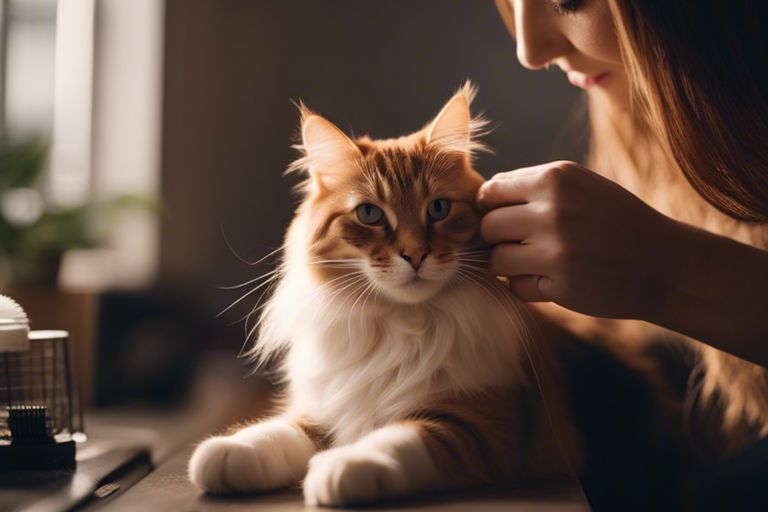
Brushing Techniques for Long-Haired Cats
The Basics of Brushing
Long-haired cats require regular grooming to prevent mats and tangles. Start by using a metal comb to gently comb through your cat’s fur, working from the top down. Be sure to pay special attention to areas prone to matting such as behind the ears, under the armpits, and around the tail.
Invest in a high-quality slicker brush to help remove loose fur and prevent mat formation. Brush your cat consistently, at least a few times a week, to keep their coat healthy and free of tangles.
Step-by-Step Guide to Brushing Long-Haired Cats
Brushing long-haired cats can be a challenging task, but with the right technique, it can become a bonding experience for you and your furry friend. Follow these steps to ensure a smooth and effective grooming session:
| Step | Description |
| 1 | Start by gently combing through your cat’s fur with a metal comb to remove any tangles. |
| 2 | Use a slicker brush to remove loose fur and prevent matting, brushing in the direction of hair growth. |
| 3 | Pay special attention to areas prone to mats, such as the belly and under the armpits. |
| 4 | Reward your cat with treats and praise to make the grooming experience positive. |
Regular grooming not only keeps your cat looking their best but also helps prevent painful mats and tangles that can lead to skin irritation. With patience and the right tools, brushing your long-haired cat can be a relaxing and enjoyable routine for both you and your feline companion.
Dealing with Mats and Tangles
Identifying Mats and How to Approach Them
Not all mats are easily visible, especially in long-haired cats. You may feel a tangled area by gently running your fingers through your cat’s fur. If you notice resistance, your cat may have a mat that needs attention. Approach mats with caution, as pulling or tugging can be painful for your furry friend.
Techniques for Safely Removing Mats
Dealing with mats requires patience and a gentle hand. One technique is to carefully separate the mat with your fingers, starting from the outer edges and working your way inwards. You can also use a metal comb or a dematting tool to help loosen the tangled fur. If the mat is too stubborn to remove on your own, seek the assistance of a professional groomer to prevent any discomfort or skin irritation for your cat.
It is important to approach mat removal with caution to avoid causing stress or pain to your cat. Regular grooming and preventive care can help minimize the occurrence of mats and tangles in your long-haired feline friend.
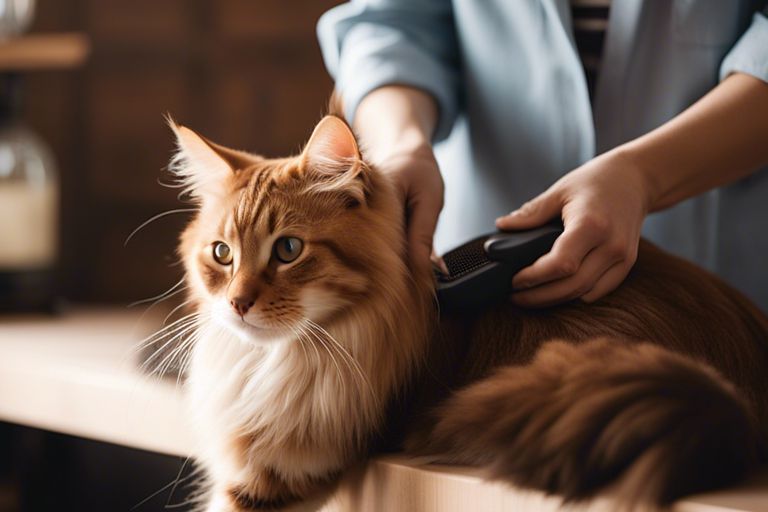
The Finishing Touches
Trimming and Clipping Tips for Long-Haired Cats
To ensure your long-haired cat’s coat stays healthy and manageable, trimming and clipping are necessary. It’s important to use the right tools, such as sharp scissors and clippers designed for pet grooming. If you’re not comfortable doing it yourself, consider taking your cat to a professional groomer who can help maintain their coat.
- Start by trimming any mats or tangles carefully to prevent pulling on your cat’s skin.
- Trim the fur around the paws and sanitary areas to keep your cat clean and free from debris.
The key is to trim with caution and always be mindful of your cat’s comfort and safety.
The finishing touches make all the difference in keeping your long-haired cat looking and feeling their best.
Post-brushing Care
Finishing up the brushing session with some extra care can help keep your cat’s coat in top condition. After brushing, consider using a fine-toothed comb to catch any remaining tangles or mats that may have been missed. This will ensure your cat’s coat is smooth and knot-free.
Understanding the specific needs of your long-haired cat will help you establish a post-brushing routine that works best for them.
Establishing a Routine
Frequency of Brushing Sessions
With long-haired cats, it is crucial to establish a regular brushing routine to prevent matting and keep their coat healthy. Aim to brush your long-haired feline friend at least 3-4 times a week to maintain their fur’s beautiful condition. Frequent brushing not only removes loose hair and prevents tangles but also helps distribute natural oils throughout the coat for a sleek and shiny appearance.
Incorporating Brushing into Your Cat’s Schedule
Incorporating brushing into your cat’s daily or weekly schedule is vital for long-haired cats. Choose a time when your cat is relaxed and settled, perhaps after a meal or a play session. Start with short grooming sessions and gradually increase the duration as your cat becomes more accustomed to the routine. Consistency is key in establishing a brushing routine that your cat will eventually come to enjoy.
Schedule regular brushing sessions at the same time each day or week to create a predictable routine for your cat. Cats thrive on routine, and by making brushing a regular part of their schedule, you are not only helping to keep their coat healthy but also building a bond through this grooming activity.
To wrap up
Following this guide on the best brushing techniques for long-haired cats is necessary for maintaining their coat in optimal condition. Regular brushing helps prevent mats and tangles, reduces shedding, and promotes a healthy skin and coat. By incorporating these techniques into your cat’s grooming routine, you can help your furry friend look and feel their best.
Remember to be gentle yet thorough when brushing your long-haired cat, ensuring you reach all the way down to their skin. Consistent grooming sessions will not only keep their coat in top shape but will also strengthen your bond with your feline companion. With these techniques and a little patience, you can make grooming a positive experience for both you and your long-haired cat.
FAQ
Q: Why is it important to brush long-haired cats regularly?
A: Regular brushing helps prevent mats and tangles in your long-haired cat’s fur, reduces shedding, and promotes a healthy coat and skin.
Q: How often should I brush my long-haired cat?
A: Long-haired cats should be brushed at least a few times a week, but daily brushing is ideal to prevent matting and hairballs.
Q: What type of brushes are best for long-haired cats?
A: Slicker brushes, wide-tooth combs, and de-shedding tools are recommended for long-haired cats to effectively remove loose hair and prevent mats.
Q: How should I brush my long-haired cat to avoid causing discomfort?
A: To prevent discomfort, brush your cat gently in the direction of hair growth, starting from the head and working your way down to the tail. Be extra cautious around sensitive areas like the belly and armpits.
Q: Are there any additional grooming tips for long-haired cats?
A: In addition to regular brushing, occasional trimming of fur around the hindquarters and sanitary areas can help prevent feces from getting stuck in the fur. It’s also important to monitor your cat’s fur for any signs of skin issues or parasites.
